
Reporter Wan Jianhui, Wan Ling, Li Qinxue, correspondent Zhao Xuefeng, Chen Zhen, Gantian
On May 29th, the Wuhan city “Building Support, Being a Good Dragon Head” series of policy trend education and publicity activities entered the Wuchang District. The “Urban Observation Group” composed of history experts, university students, photographers, community workers, Wuhan city end-users, and Changjiang website friends conducted field visits to the Wuchang City History Museum, Wuchang Ancient City Planning and Exhibition Hall, Xinghualin, and Doulevel Special Streets Districts, exploring the cultural legacy and innovations in Wuchang’s practice, feeling the cultural impact of Wuhan’s support construction.
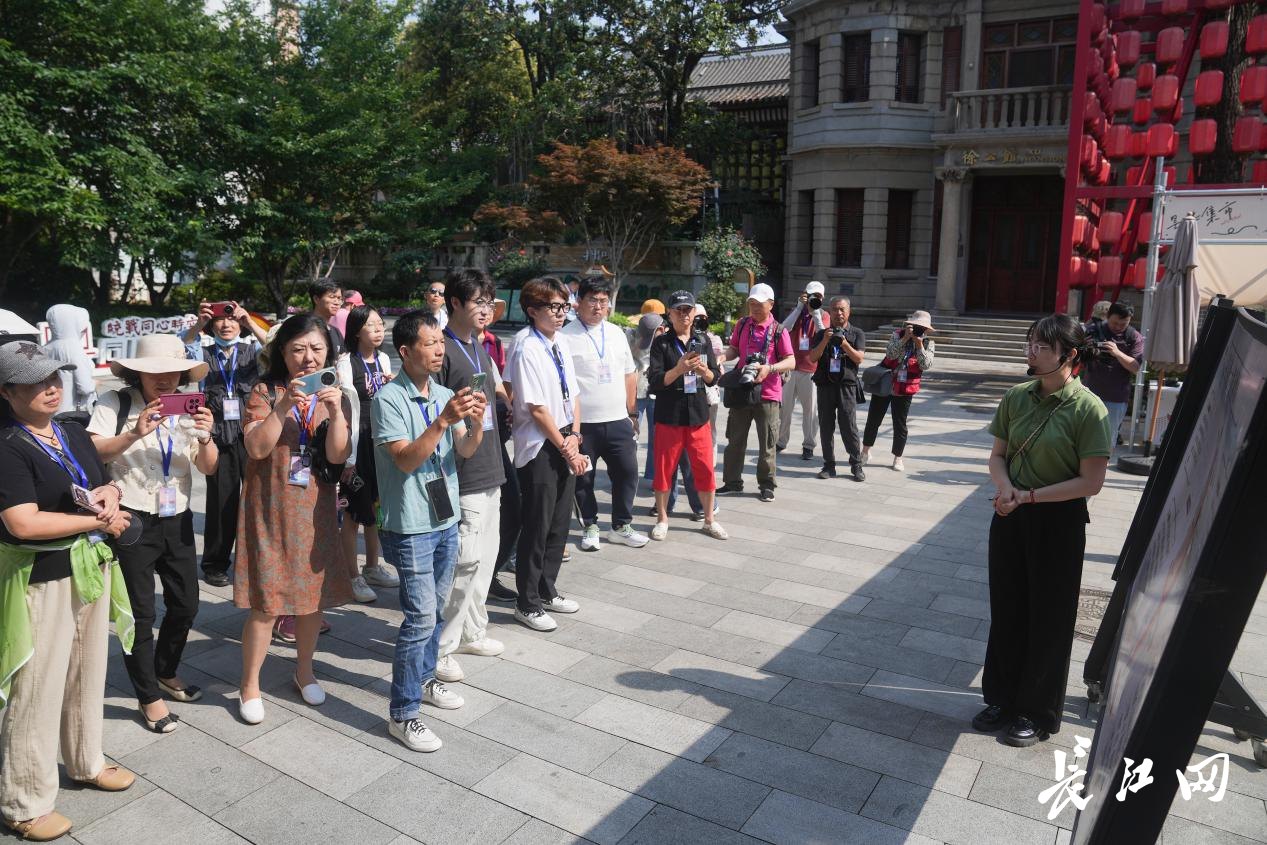
The blending of tradition and modernity, integration of culture, travel, and commerce
Early summer afternoon, the weather was clear and pleasant. The Observation Group followed a route through Xinghualin Square, the Wuchang Ancient City Wall, Wuchang City History Museum, Xinghualin Fusion Park, and the main entrance of the Provincial Chinese Medicine University, passing through the Xinghualin core area. They then arrived at the Doulevel Special Streets District under the Changjiang Bridge’s Wuchang head, starting from the entrance of the Hanyangmen Garden, observed the first phase of Doulevel Special Streets, and finally entered the Wuchang Ancient City Planning and Exhibition Hall.
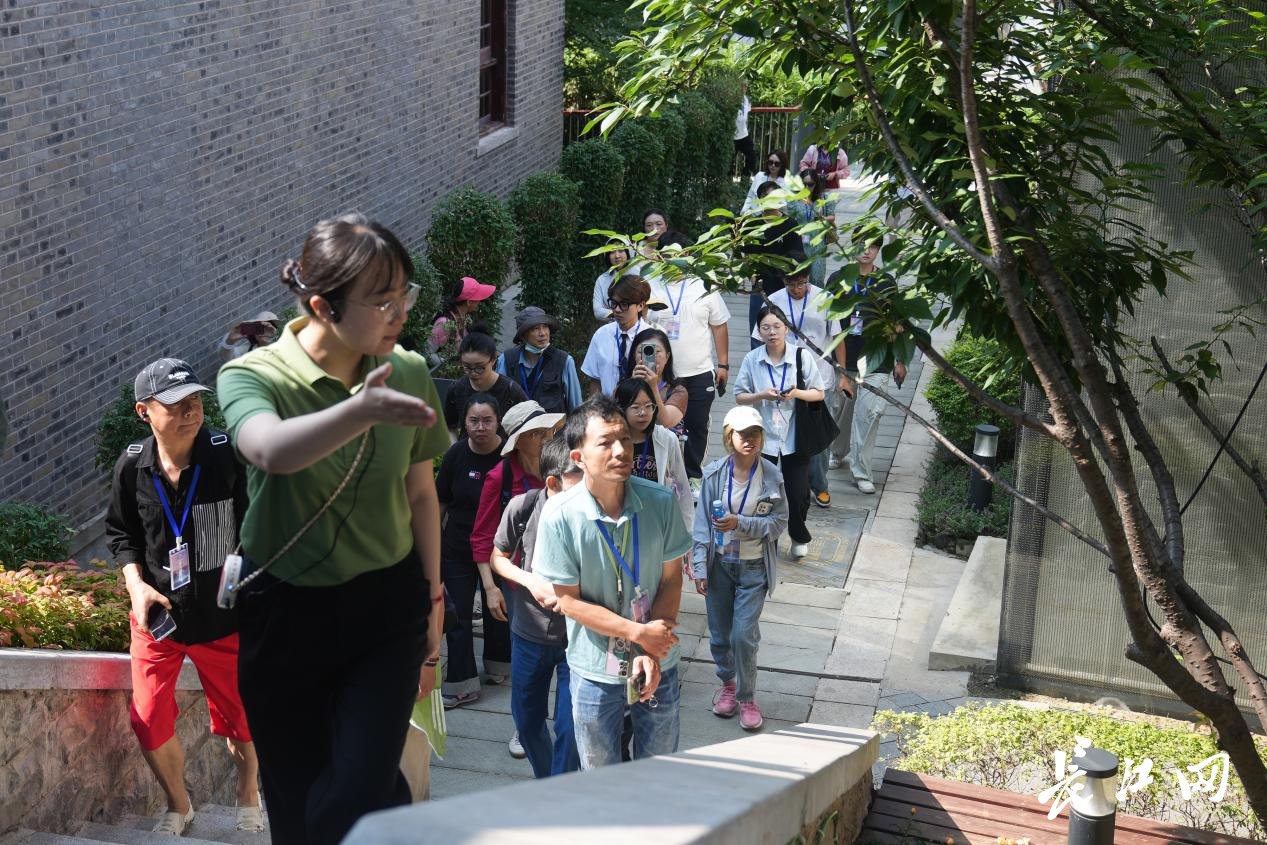
The Urban Observation Group visited the Xinghualin History and Culture Street District. Reporter Peng Nian, photographer
“The few recent buildings I just saw are so well preserved, quite impressive!” Standing on the ancient city wall of Wuchang in Yingwuzhou, Liu Xiuhan, a third-year student from the School of News and Communication at Hubei University, told reporters. When friends come to Wuhan, she will definitely recommend they check-in to Yingwuzhou. This street has so many modern buildings, bookstores, and universities, full of the charm of old Wuhan. After visiting the Wuchang Museum of History, Tsering Zhamdo, a Tibetan student majoring in Business Management at Wuhan University of Technology, expressed his sentiments: “I have come to Yingwuzhou several times before, usually to look at some cultural stores. This time, joining the observation team and listening to professional explanations helped me understand the long history of the ancient city of Wuchang. The theme in the city history museum, ‘Flourishing due to martial arts, strengthening due to changes’, left a deep impression on me!”
“Yingwuzhou is an old street that has sunk into 600 years of history and can be traced back to the expansion of the city of Wuchang during the reign of Ming Hongwu. It is praised as the ‘root of Wuchang city culture’.” Published works include “Zhang Zhidong in Wuchang”, “Yingwuzhou Historical Chronicle”, and “Hundred Year Grain Road” among others, by Wuhan University of Science and Technology Law and Economics School professor and Director of the Zhang Zhidong Literature Museum, Zhang Jicai, who joined the whole journey with the observation team on the tour of the ancient city of Wuchang.
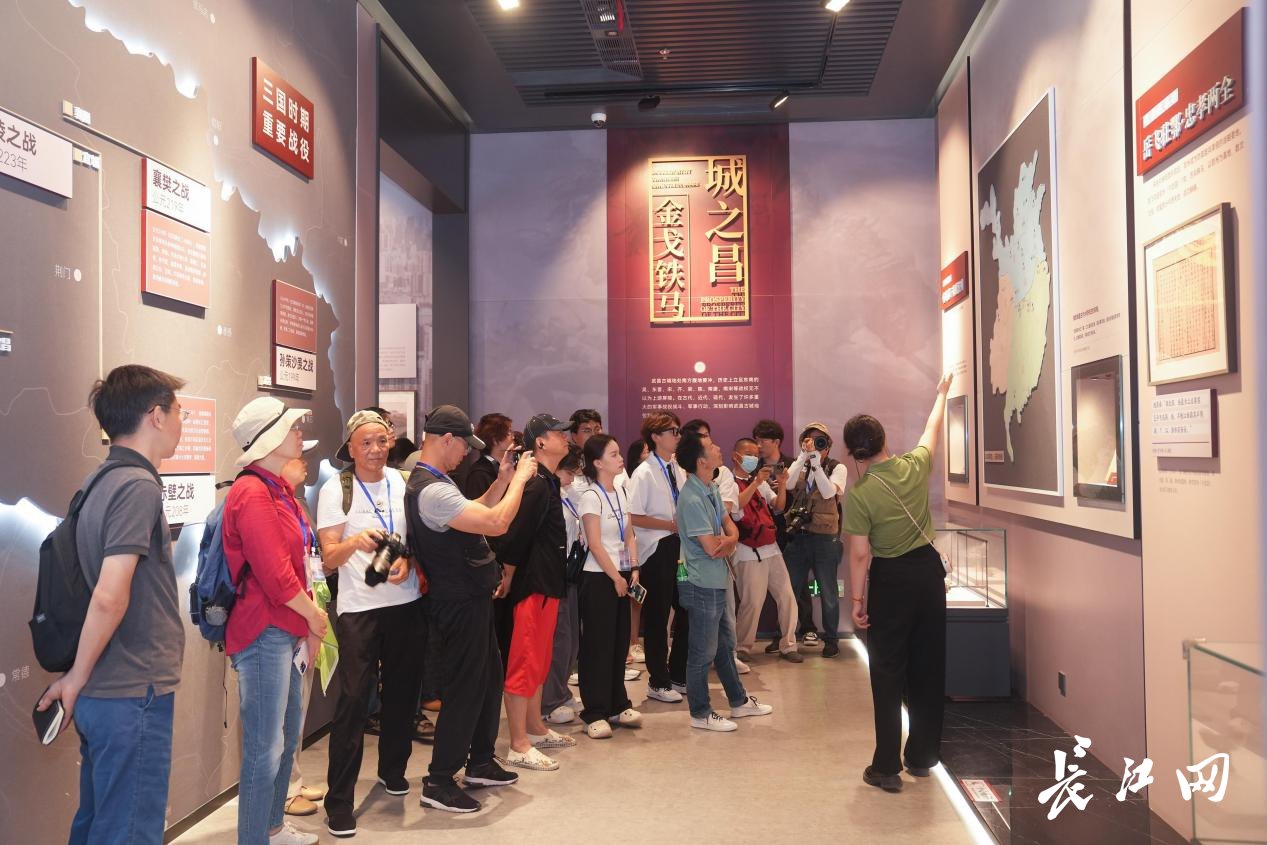
A relevant person in charge introduced the Wuchang district, with Yingwuzhou and Doujiaying as representatives of Wuchang ancient city. From the “military fort” during the Three Kingdoms period, it developed during the Tang and Song dynasties into the ‘southeastern giant town’, became “Huguang Association City” in the Ming and Qing dynasties, and now is a charming Wuchang where tradition and modernity interweave, culture and commerce blend. It is both a poetic landmark of Yangtze River civilization and a vibrant hub for innovative development, holding an irreplaceable and significant position in the historical and cultural context of Wuhan and the Yangtze River culture.
The person in charge said, “Wuchang Ancient City uniquely possesses rare resources such as the ‘first tower of the thousand-year-old rivers and mountains’ and the ‘first bridge over the Yangtze River,’ among others. It boasts 111 immovable cultural relics, 82 representative items of intangible cultural heritage, and 16 national and non-national museums, making Wuchang Ancient City a crucial root of Wuhan City, leaving no room for doubt.”
Cultural and creative industries are expanding, and the ‘Han Style Culture’ atmosphere is strong.
The steps taken for the protection and revitalization of Wuchang Ancient City have continued for 17 years. In 2008, the Protection and Revitalization Plan of Wuchang Ancient City was approved, officially launching the protection and revitalization works. In 2018, Wuchang District proposed the construction standards for 5A-level scenic areas, aiming to create the ‘Historical and Cultural Tourism Zone of Wuchang Ancient City with Yellow Crane Tower.’

Members of the city observation group view the model of the ancient city’s plan at the Wuchang Ancient City Planning Exhibition Hall. Photo by journalist Peng Nian.
A person in charge from the relevant department in Wuchang District told reporters that the area is deeply exploring the historical and cultural connotations of Wuchang Ancient City. By implementing measures such as protecting and updating historical and cultural streets, creating a model for cultural tourism integration, and organizing cultural activities with unique features, the attractions of Yellow Crane Tower, Xinhuayuan, Doujie Base Camp, and Hubuxiang are linked together. These actions aim to promote the transformation and upgrading of Wuchang’s cultural tourism industry.”
“We want the millennium-old relics to live in the present, integrating cultural memories into modern life.” A relevant person in charge from Wuhan Wuchang Ancient City Cultural Tourism Investment Development Group said, currently pushing forward the Thousand-Year-Old Axis of Desheng Bridge, the construction of key points like She Mountain North Slope, and linking projects like Doujie Base Camp and Heart Study Academy. These efforts are integrated to advance investment attraction, project management, and operation.
According to the person in charge, the Xinghualin Historic and Cultural Street District receives nearly 70,000 tourists per day during the May Day holiday, peaking at near 100,000. Tourists, dressed in Hanfu, climb to the top of Xinghualin, experiencing the traditional cityscape, listening to the wall music event, and witnessing the dazzling light shows… Every corner is a perfect ‘movie set’ backdrop, sparking a viral trend on social media.
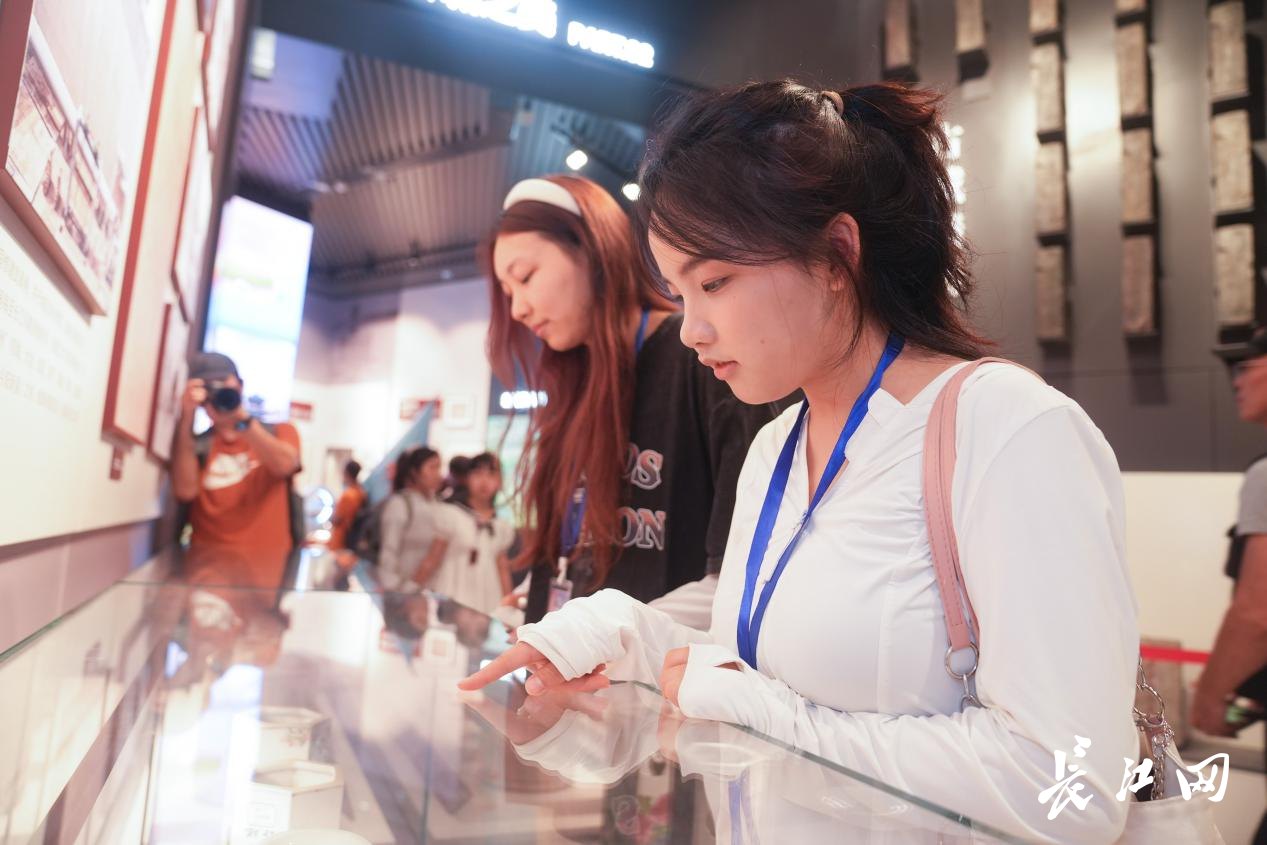
University students from the city observation group visiting the Museum of Wuchang City History to browse cultural artifacts. Photo by Journalist Peng Nian
Xinghualin Historic and Cultural Street District has been awarded titles such as ‘National Tourist Leisure Street’ and ‘Hubei Province Historic and Cultural Street.’ Currently, the area hosts over 280 businesses, with cultural and creative industries making up about 60%. The cultural and creative industries are gradually integrating and coexist harmoniously with the traditional businesses of old streets and alleys.
The recent transformation of the ancient city of Wuchang is being observed and documented in photographs by members of the observation group and photography enthusiasts like Feng Jianxin. He has been documenting Wuchang’s stories through his lens, allowing netizens nationwide to witness the fresh vitality of the thousand-year-old city in the new era. Feng Jianxin said, ‘Watching tourists from across the country, including international ones, enjoying the beautiful scenery, tasting the delicious food, and experiencing the culture here every day makes me feel particularly proud as an old Wuchang resident!’
In the Doujiaying Historic and Cultural Street District, the Qingwa Red Wall’s slanted roof corridors host a harmonious mix of tea ceremony shops, coffee shops, bookstores, and other diverse businesses. As an important extension of the Hubu Alley, it leans against the Yellow Crane Tower and overlooks the Yangtze River Bridge, naturally generating foot traffic since the street’s opening.
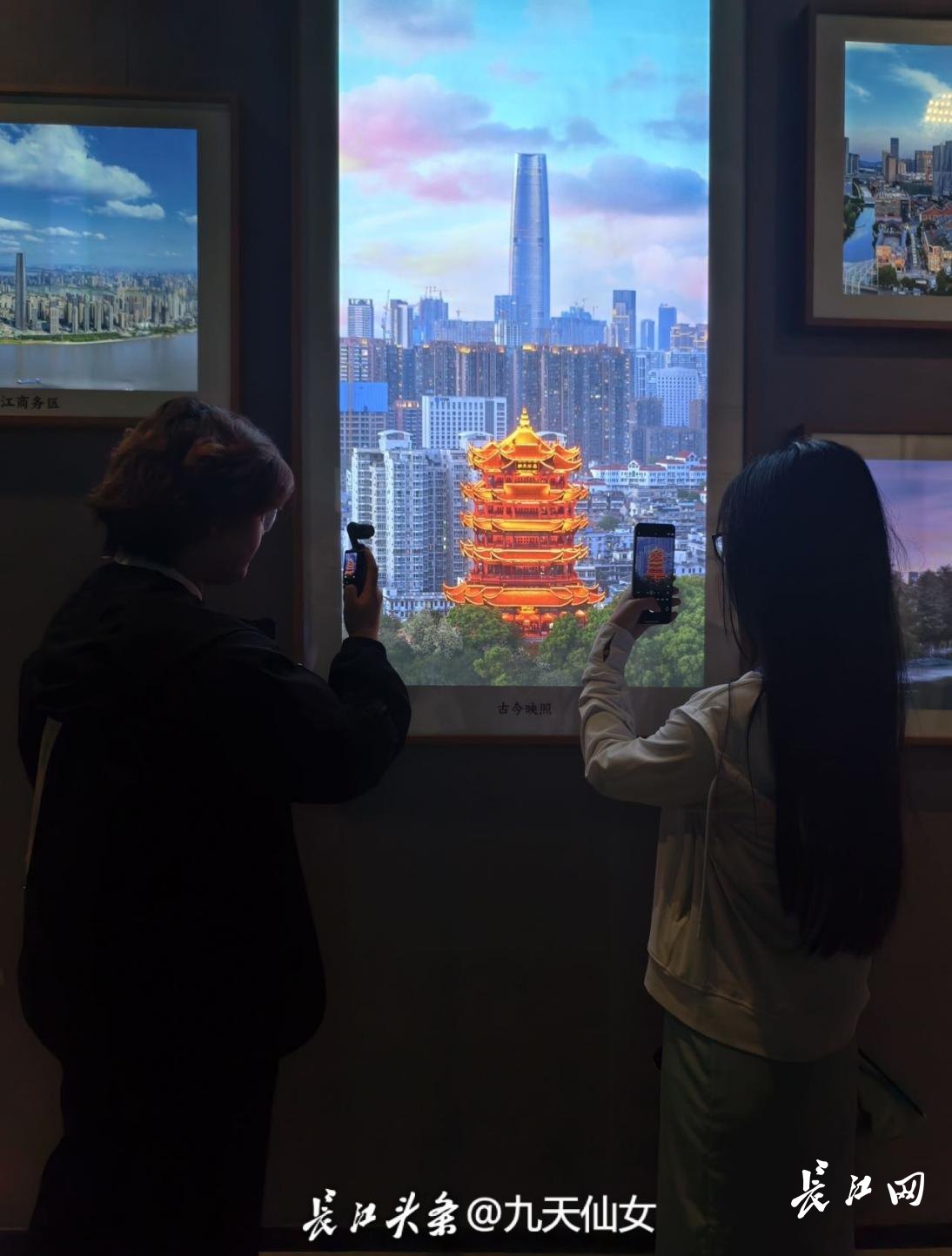
University students from the city observation group document photos capturing the present and past reflections of the ancient city of Wuchang. Photo by Journalist Peng Nian
“From Xinghualin’s ‘getting popular’ to Doujiaying’s ‘standing out’, Wuchang Ancient City has found a balance between respecting history and embracing innovation,” Jiang Shan, a member of the city observation team, told reporters. She is very pleased to have chosen Wuhan as the place for her endeavors, as the diverse ‘Han Culture’ atmosphere here attracts more and more young people to travel and live in Wuhan, making more people fall in love with Wuhan and willing to contribute to it.
The responsible person from the Wuhan Wuchang Ancient City Culture and Tourism Investment Development Group stated that they will continue to lead with the concept of ‘support the construction, be the best dragon head’, allowing the ‘foundation’ of ancient city culture, the ‘harmony’ of neighborhood culture, and the ‘vitality’ of commercial culture to be tangible and mutually integrated, nurturing a shared spirit and co-creating a better life.
Renew Wuchang Ancient City, creating a new international cultural and tourism card for Wuhan.
“The renovation and construction of Wuchang Ancient City, in the process of establishing Wuhan as a world-renowned cultural tourism destination, occupies a core strategic position and is a key driver for showcasing the cultural heritage of the Yangtze River and enhancing Wuhan’s tourism competitiveness.”
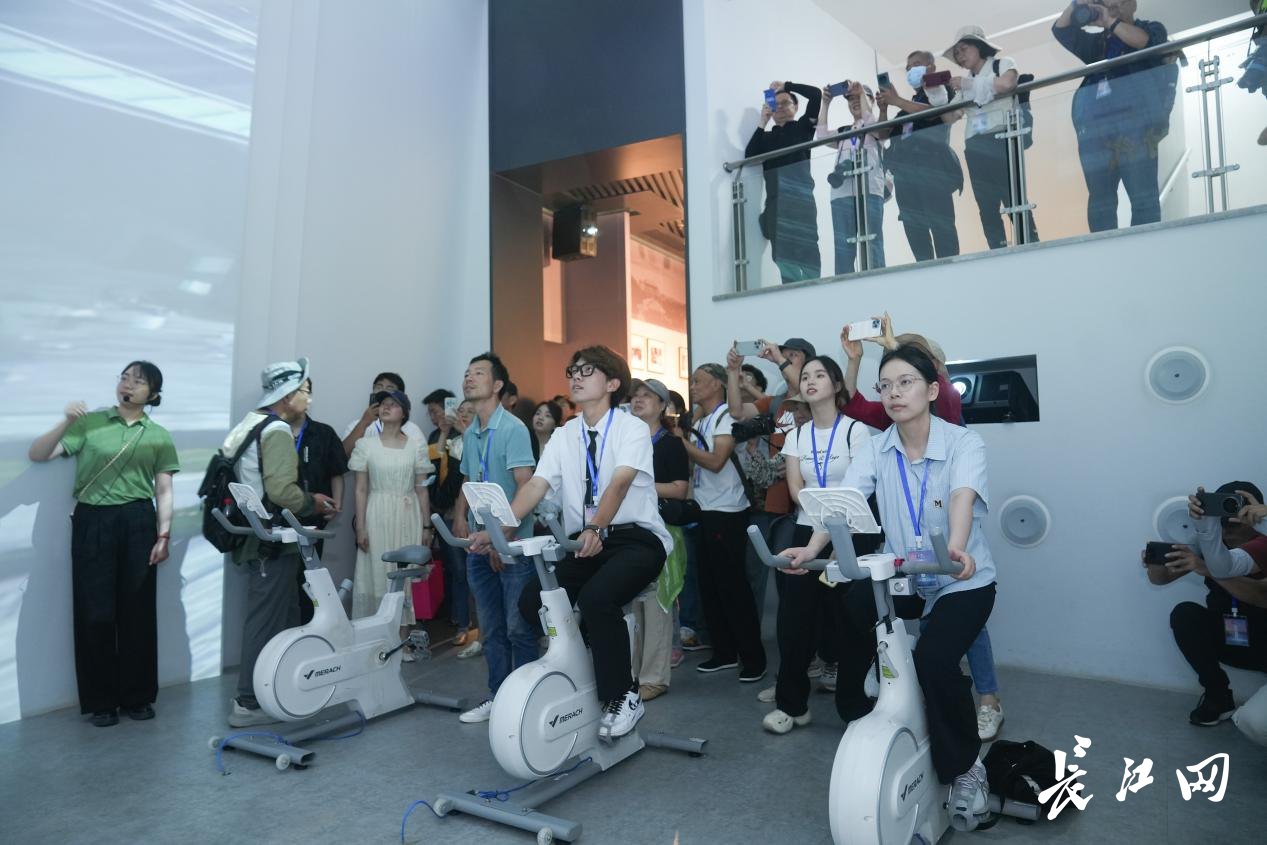
City observation team members experience the interactive installations of the Wuchang City History Museum. Photo by Reporter Peng Nian.
A responsible person from the relevant department of Wuchang District stated in an interview that the renewal and construction of Wuchang Ancient City leverages the millennium-old axis, the Yellow Crane Tower, and Xinghualin, among others, as carriers. Guided by the unique spatial structure of ‘one vertical, three horizontals’ planning and led by cultural tourism industry development as the strategic guide, it continually stimulates market vitality. In 2024, Wuchang District is expected to receive 50.56 million domestic tourists and achieve tourism revenue of 52 billion yuan, with year-on-year growth of 11.15% and 11.22%, respectively.
The restructured Doujiaying Phase I building preserves the Republic of China style, and through revitalization of historical buildings, industrial innovation upgrades, and cultural experience reshaping, it has transformed from traditional alleys into a new cultural and tourism landmark blending historical depth with modern trends. Observers walk into Han-style gift shops, poetry-themed bookstores, and vintage record stores. Climbing the stairs to the top floor, you can see the distant silhouette of Yellow Crane Tower and Mount Shield, with everyone eagerly capturing these moments on their phones.

Photography enthusiasts among the city observation group members documented exciting moments during their visit. City observation group member Wang Jun captured this moment.
Cultural history expert Professor Zhang Jicai said Doujiaying cultural tourism district is backed by the scenic Snake Mountain and the majestic Yangtze River in the west. This area holds a rich natural endowment and deep cultural heritage, providing a new check-in destination for citizens and tourists. According to the plan, there will be walkways connecting this area with the Yellow Crane Tower scenic area, forming a large Yellow Crane Tower scenic district, and we look forward to the reciprocal connectivity between the northern and southern scenic areas of Snake Mountain.
He stated, “If the ancient history of Wuchang can be seen in the Xinghua Lin Wuchang City History Museum, then in the Doujiaying Wuchang Old City Planning Exhibition Hall, one can see the renewed vision of the ancient city’s future.”
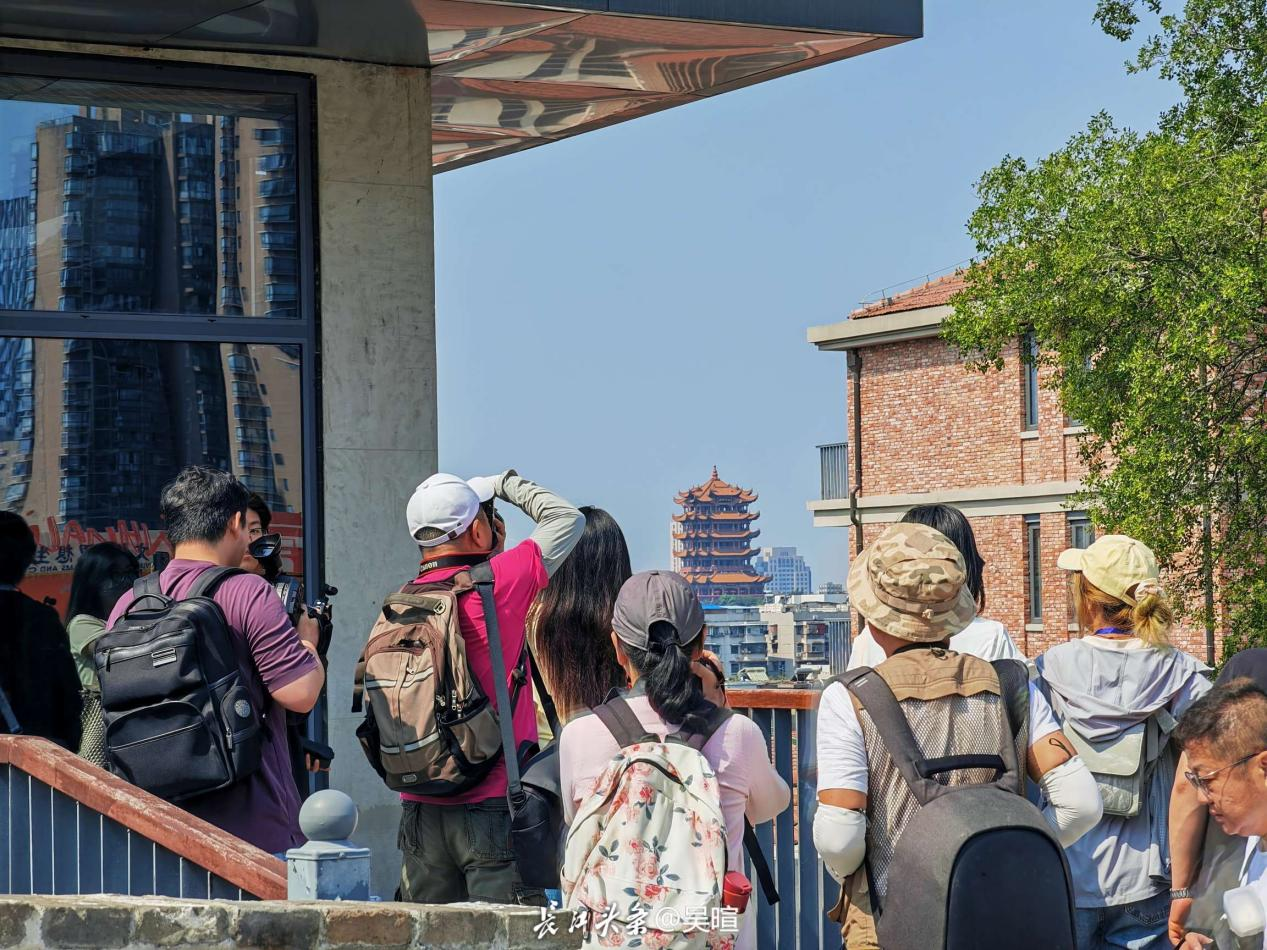
Members of the city observation group admired the Yellow Crane Tower from Xinghua Lin. Wu Xuan, a city observation group member, captured this moment.
Han Guang, a 62-year-old member of the observation group living in Hankou, told reporters that after seeing the transformed Xinghua Lin and Doujiaying, he felt the profound history of ancient Wuchang and witnessed new cultural tourism hotspot industries of the ancient city. He believes that if the historical and cultural heritage of the ancient city is further explored, it could play a pioneering role in the future cultural tourism development of Wuhan.
A representative from the Wuhan Wuchang Ancient City Cultural Tourism Investment Development Group stated that Wuchang Ancient City boasts world-class cultural and tourism resources such as Yellow Crane Tower. Through innovative construction, it will achieve protective development and upgrades, aiming to establish Wuhan as a new international cultural tourism destination. Among these, Doujieying and Xinghualin have become key engines in enhancing Wuhan’s international cultural tourism competitiveness.
At the recent citywide cultural tourism development conference, it was requested to keep our mission in mind and take up the responsibilities of our times. The goal is to build world-renowned cultural tourism destinations swiftly and to cultivate the cultural tourism industry as a pillar industry. This will strongly support advancing the “Three Advantages Transitions” and reshaping the modern charm of Wuhan.

The “Jade Flute and Yellow Crane” mural in the Doujieying historical and cultural street has become a hotspot for online influencers and a landmark for visitors. Photo by City Observatory Group Member Xiao Bangjun.
A representative from the relevant departments of Wuchang District stated that in the grand blueprint of building Wuhan as a world-renowned cultural tourism destination, Wuchang accelerates the integration of commerce, culture, and tourism based on its “Millennium Ancient City” heritage with a “Modern City” platform. It strives to become the “core area of world-renowned cultural tourism”, contributing to the “Three Advantages Transitions”, reshaping the modern charm of Wuhan, and positioning Wuhan as a forerunner in pivotal construction, making Wuchang’s contribution.
The series of situational policy publicity and education activities titled “Build a Stronghold, Be a Dragon Head” in Wuhan City are jointly organized by the Wuhan Municipal Committee’s Publicity Department, relevant city-level units, and related districts, and hosted by Changjiang Daily Media Group and Wuhan Radio and Television Station. These activities focus on thematic reporting, in-depth interviews, on-site exploration activities, and grassroots situational policy publicity and education activities. As one of the main activities, the on-site exploration activities comprehensively showcase the city’s development momentum, allowing more people to personally experience the achievements of Wuhan’s “stronghold construction” and the bustling scenes of high-quality development.
(Editor-in-Chief of Value Class Wang Xue, Head of Value Class Zhang Meng, Value Class Editor Li Zhiheng)